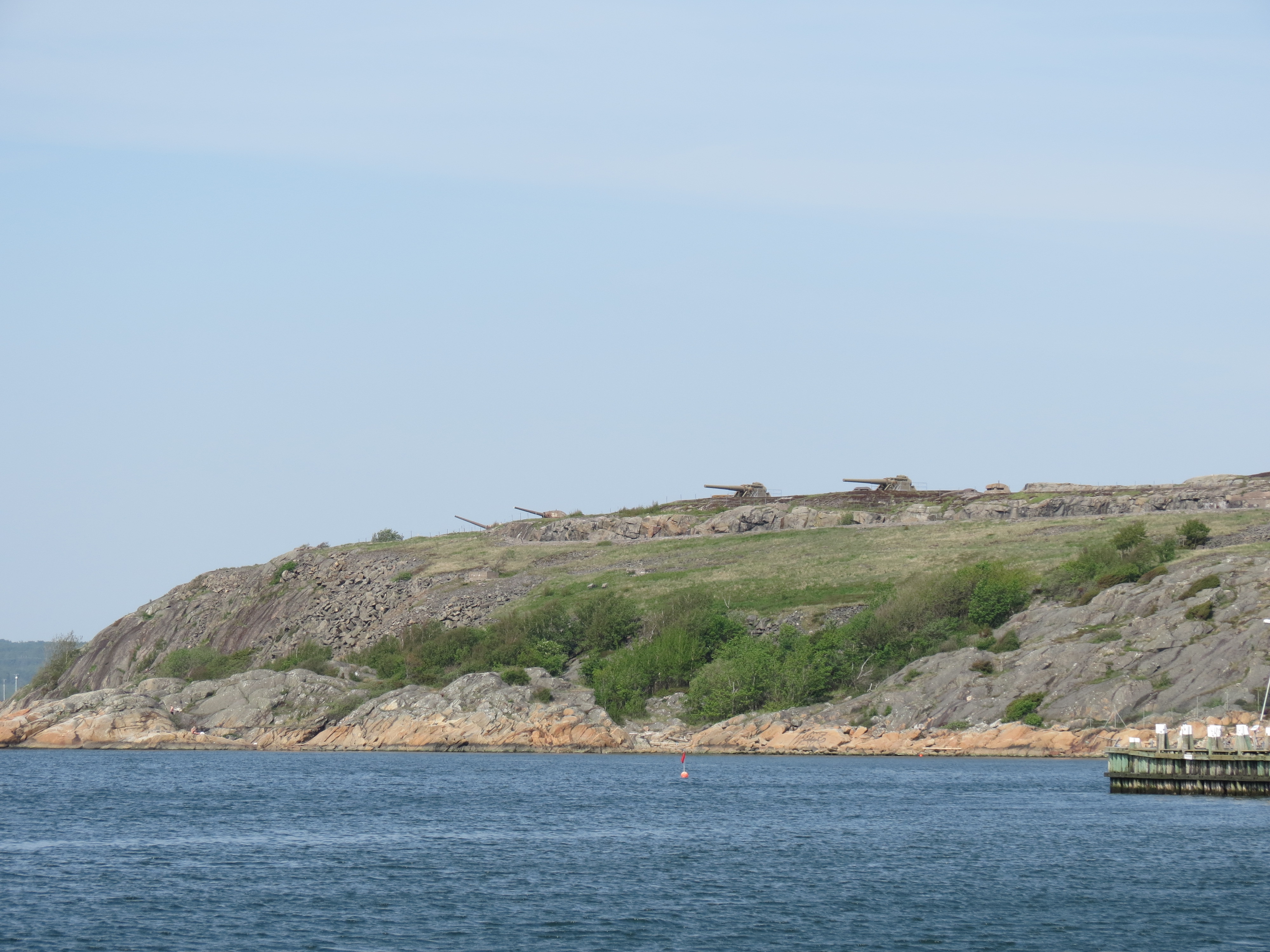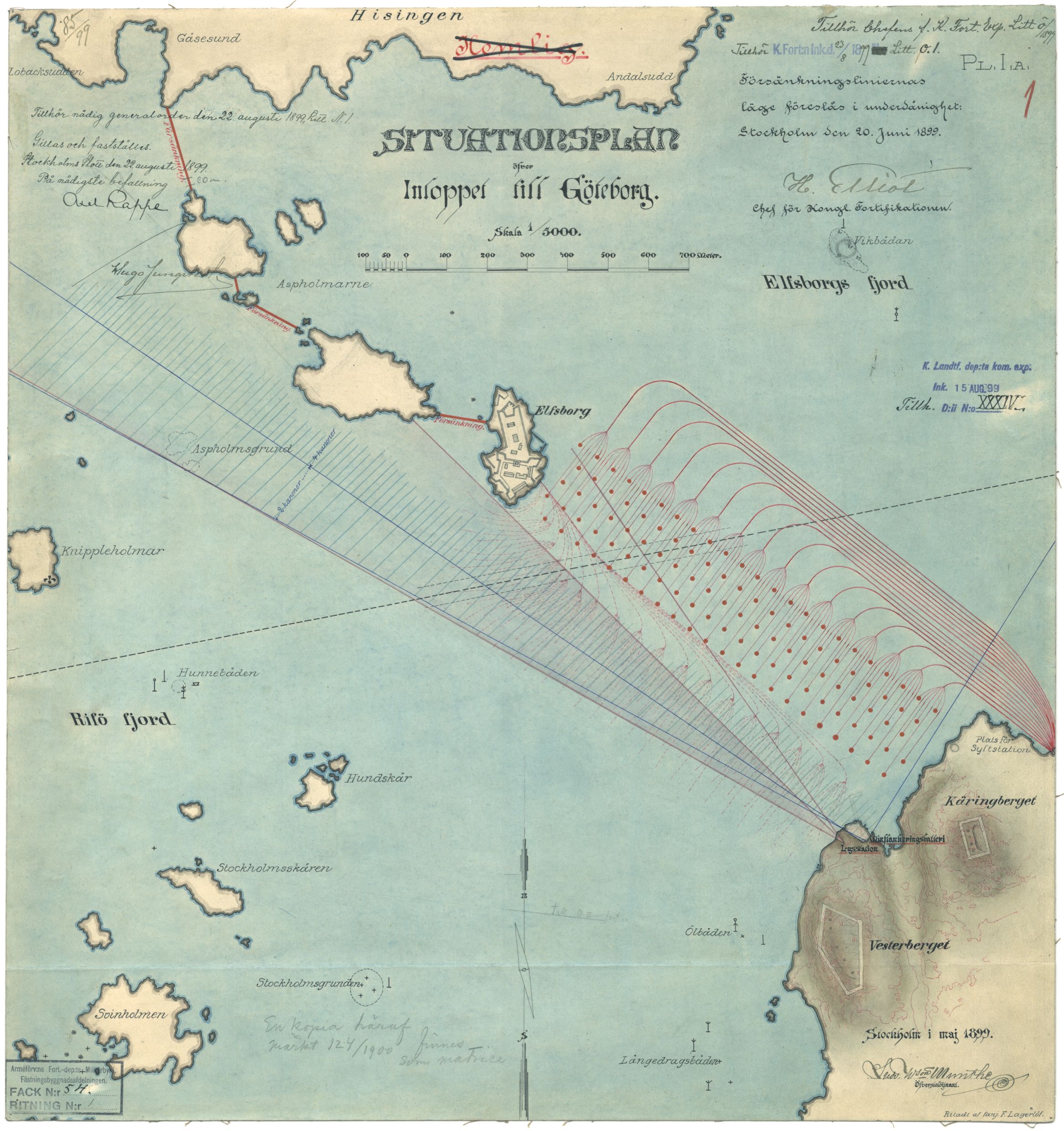Älvsborg Fortress on:
[Wikipedia]
[Google]
[Amazon]
 Älvsborg Fortress ( sv, Älvsborgs fästning), with its main facility Oscar II's Fort ( sv, Oscar II:s fort) built 1899–1907, is a now-defunct Swedish fortification located at the mouth of the Göta River in the Älvsborg district of Gothenburg, Sweden.
Älvsborg Fortress ( sv, Älvsborgs fästning), with its main facility Oscar II's Fort ( sv, Oscar II:s fort) built 1899–1907, is a now-defunct Swedish fortification located at the mouth of the Göta River in the Älvsborg district of Gothenburg, Sweden.
 Staffing:
*1902: one officer, three non-commissioned officers and 28 men
*1912–1914: eight officers, 19 non-commissioned officers and 123 men
*1915–1919: nine officers, 19 non-commissioned officers and 123 men
*1912–1925 ten officers, 41, non-commissioned officers and 103 men
*1926–1940: one officer, four non-commissioned officers and 9 men, as well as
*1940–1942: a gradual increase in personnel
Staffing:
*1902: one officer, three non-commissioned officers and 28 men
*1912–1914: eight officers, 19 non-commissioned officers and 123 men
*1915–1919: nine officers, 19 non-commissioned officers and 123 men
*1912–1925 ten officers, 41, non-commissioned officers and 103 men
*1926–1940: one officer, four non-commissioned officers and 9 men, as well as
*1940–1942: a gradual increase in personnel
File:24 cm cannon M04 at Älvsborgs fästning.JPG, 24 cm gun M/04, one of two of this type.
File:24 cm cannon M04 at Älvsborgs fästning (2).JPG, 24 cm gun M/04, one of two of this type.
File:Naval gun at Älvsborgs fästning in Gothenburg.JPG, 15 cm gun, one of two of this type of coastal artillery gun.
File:Naval gun at Älvsborgs fästning in Gothenburg (2).JPG, 15 cm gun, one of two of this type of coastal artillery gun.
History
Construction of the fortress began in 1899 and was completed in modern condition in 1907. In 1904 the name Älvsborg Fortress was given to the new coastal fortress at the mouth of the Göta River, whose strongest fortification, Oscar II's Fort, started construction in 1899 on Västerberget. The fortress, whose task, like previous fortresses, was to secure both Gothenburg and thePort of Gothenburg
The municipally-owned Port of Gothenburg ( sv, Göteborgs hamn) is the largest port in the Nordic countries, with over 11,000 ship visits per year from over 140 destinations worldwide. As the only Swedish port with the capacity to cope with the ...
and the Swedish Navy's rallying point there against attacks from the sea, was in 1907 equipped with new modern artillery guns. The main body of the fortress consisted of two 24 cm guns model of 1904 mounted on disappearing carriages and some 15 cm gun turrets and other light guns. The fort, which is immersed in the basement, encompasses space for 300 people and consists of several hundred meters of walkways with offices, lodgings, messes and stores. The fort's armament was completed in 1907. In addition naval mines around the flanks, there was also a light battery, the ''Götiska batteriet'' ("Geatish Battery") donated by the Geatish Society
The Geatish Society (''Götiska Förbundet'', also Gothic Union, Gothic League) was created by a number of Swedish poets and authors in 1811, as a social club for literary studies among academics in Sweden, with a view to raising the moral tone o ...
.
On King Albert I of Belgium's arrival and departure from Gothenburg in connection with the visit of the then Crown Prince Leopold's wedding to Princess Astrid on 4 November 1926, a greeting was fired from Älvsborg Fortress. This was at the same time KA 3's farewell salute and the last salute given by Älvsborg Fortress. On 1 November of the same year, the fortress had already been placed into materiel reserve. Prior to the threatening foreign policy situation, the fortress was put in the defensive state in the fall of 1939. Oscar II's Fort lost its guns in 1939-1940 with the exception of the ''Götiska batteriet'', when they were moved to the main defense line on the outskirts of Gothenburg archipelago
The archipelago of Gothenburg ( sv, Göteborgs skärgård) comprises northern and southern archipelagoes. The southern archipelago is part of Gothenburg municipality located in the province of Västergötland while the northern archipelago is Öc ...
. During World War II
World War II or the Second World War, often abbreviated as WWII or WW2, was a world war that lasted from 1939 to 1945. It involved the vast majority of the world's countries—including all of the great powers—forming two opposing ...
, the fortress and the fortress area were used for accommodation etc. In 1942, Älvsborg Fortress was amalgamated into Gothenburg Coastal Artillery Defence
Gothenburg Coastal Artillery Defence ( sv, Göteborgs kustartilleriförsvar, GbK) was a unit of the Swedish Coastal Artillery which operated from 1942 to 1980. The staff was located in the Gothenburg Garrison in Gothenburg, Sweden.
The Gothenbu ...
, which, with its fortifications, batteries and mine barriers in the Gothenburg archipelago, took over the traditional defence of Gothenburg. Until the 1970s, the fortress spaces were used for storage. Due to a significant deterioration of the internal passages and spaces, the fortress was completely disbanded during the 1970s.
The fortress became a listed building
In the United Kingdom, a listed building or listed structure is one that has been placed on one of the four statutory lists maintained by Historic England in England, Historic Environment Scotland in Scotland, in Wales, and the Northern Irel ...
on 15 March 2018.
Staffing of Älvsborg Fortress
 Staffing:
*1902: one officer, three non-commissioned officers and 28 men
*1912–1914: eight officers, 19 non-commissioned officers and 123 men
*1915–1919: nine officers, 19 non-commissioned officers and 123 men
*1912–1925 ten officers, 41, non-commissioned officers and 103 men
*1926–1940: one officer, four non-commissioned officers and 9 men, as well as
*1940–1942: a gradual increase in personnel
Staffing:
*1902: one officer, three non-commissioned officers and 28 men
*1912–1914: eight officers, 19 non-commissioned officers and 123 men
*1915–1919: nine officers, 19 non-commissioned officers and 123 men
*1912–1925 ten officers, 41, non-commissioned officers and 103 men
*1926–1940: one officer, four non-commissioned officers and 9 men, as well as
*1940–1942: a gradual increase in personnel
Commandants
Commandants: *1908–1914: Sam Bolling *1914–1924: Arthur Edström *1924–1925: Hans Malmberg *1925–1927: Karl Norén *1927–1930: Gustaf Peterson *1930–1936: Folke Eriksson *1936–1939: Sigge Hultkrantz *1939–1941: Åke Wockatz *1941–1942: Rudolf KolmodinGuns
References
{{Gothenburg Forts in Sweden Gothenburg Garrison Buildings and structures in Gothenburg Coastal fortifications Listed buildings in Gothenburg